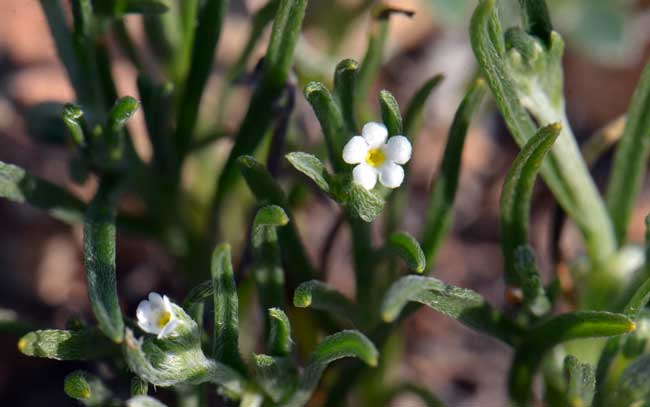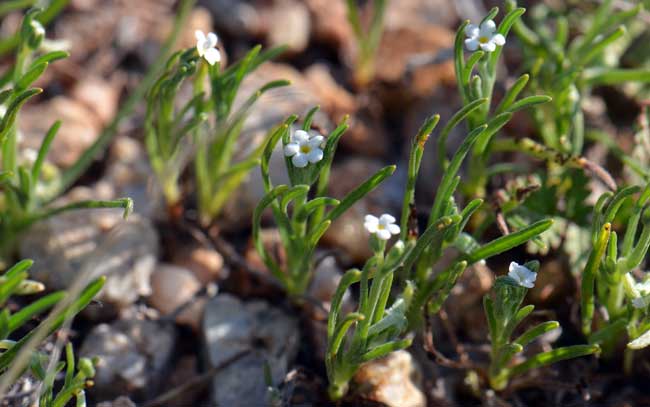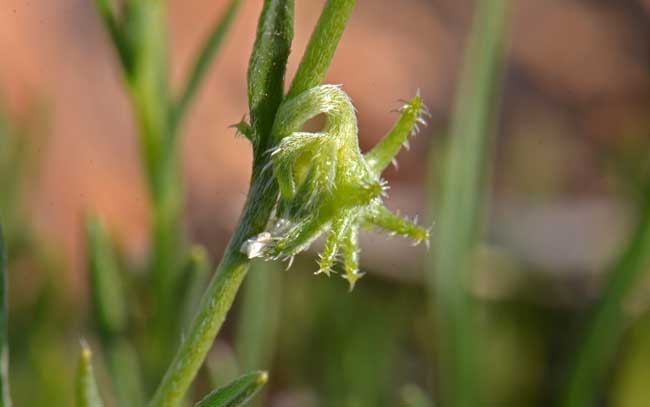Harpagonella palmeri, Palmer's Grapplinghook



Scientific Name: Harpagonella palmeri
Common Name: Palmer's Grapplinghook
Also Called: Palmer's Grappling-hook
Family: Boraginaceae, Forget-Me-Not Family
Synonyms: (Pectocarya palmeri)
Status: Native.
Duration: Annual
Size: Up to 12 inches, usually smaller.
Growth Form: Forb/herb; erect or ascending, herbage with spiny or bristly hairs.
Leaves: Green; linear or lanceolate, strong mid-line, rolled-under or revolute, hairy or bristly.
Flower Color: White, bright white, flowers in leaf axils on tips of branches, fruit on twisted pedicel (stem) (see photo above), spiny fruit is a nutlet.
Flowering Season: February to April.
Elevation: Below 3,500 feet.
Habitat Preferences: Gravelly slopes and benches in Creosote communities.
Recorded Range: Palmer’s Grapplinghook is rare in the United States. It’s populations are limited to central and southern Arizona and southern California. Also found in northern and central Baja California and northwest Mexico.
U.S. Weed Information: No data listed.
Invasive/Noxious Weed Information: No data listed.
Wetland Indicator: No data listed.
Threatened/Endangered Information: California Native Plant Society (CNPS) has placed Harpagonella palmeri in California Rare Plant Rank 4: Plants of Limited Distribution - A Watch List.
Genus Information: 1 species in Harpagonella the United States and Arizona.
2 varieties in Harpagonella palmeri:
Harpagonella palmeri var. arizonica, Arizona Grapplinghook (AZ only) and
Harpagonella palmeri var. palmeri, Palmer's Grapplinghook (CA, possibly AZ).
Comments: Palmer’s Grapplinghook is a small diminutive plant distinguished from similar looking Borages by strange looking fruits certainly resembling "grappling" hooks. They are relatively common in central Arizona but the California Native Plant Society considers this species as fairly threatened because of their limited distribution.

